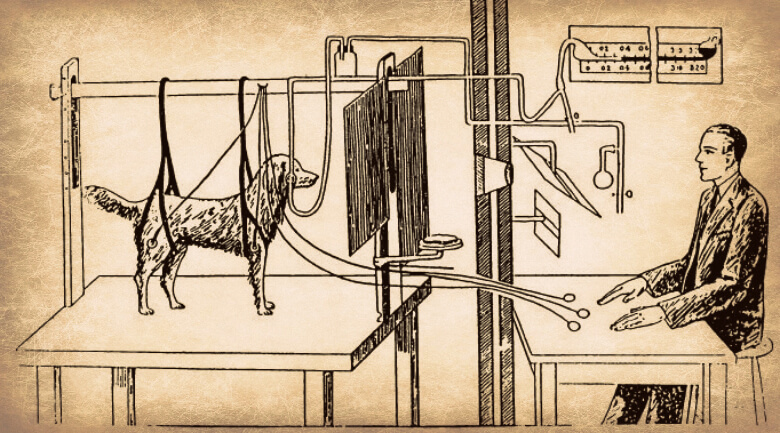

People who experience severe anxiety or fear in response to certain stimuli, like racial slurs or spiders, might undergo a process called counterconditioning, in which patients are exposed to triggering stimuli in controlled amounts and trained to respond to them in a calm manner. For example, they were used to create behavioral therapy programs for psychiatric patients. The principles learned from Pavlov’s experiment are significant because of their wide applicability.

When the dog salivates after hearing the ticking, this is a conditioned response because it’s a learned reaction, not a naturally instinctive one. This means that the metronome’s ticking, which was previously a neutral stimulus, has now become a conditioned stimulus, or an item that an animal has been trained to respond to. In Stage 3: After Conditioning, Pavlov presents the dog with just the metronome, and it starts salivating even though there’s no food in sight. Now, the dog’s brain identifies the metronome’s ticking as an accurate predictor for when food will be served. Using more technical terms, Pavlov pairs the previously neutral stimulus with the unconditioned stimulus and does multiple experimental trials of this procedure. In Stage 2: Conditioning, Pavlov first presents the dog with the metronome, then with the food (which the dog is allowed to eat), and repeats this sequence multiple times. Thus, the metronome is currently a neutral stimulus, or an item that elicits no reaction. After the dog has calmed back down to its original state, Pavlov presents it with a ticking metronome, and the dog does nothing. The uncontrollable, innate reaction itself is known as the unconditioned response, which in this case is salivation. In Stage 1: Before Conditioning, Pavlov presents the dog with food, which is an unconditioned stimulus, or an item that will elicit an uncontrollable, innate reaction. Through his experimentation, Pavlov discovered a three-stage process to classical conditioning. Intrigued by this new observation, Pavlov decided to structure a whole new experiment around making the dogs salivate in response to other random sounds. Since Ivan Pavlov was originally a physiologist, not a psychologist, he was in the middle of studying how the digestion process works in dogs when he realized that the dogs he was working with would already start drooling at the footstep-sounds of the assistant who fed them-not just when food was actually placed in front of them. After several repetitions of first presenting the environmental stimulus and then the natural stimulus to an animal, that organism will now give a response even when only presented with the environmental stimulus. DefinitionĬlassical conditioning, a learning process discovered by Russian physiologist Ivan Pavlov, occurs when an environmental stimulus which is not biologically-wired to get a certain response is repeatedly paired with a natural stimulus that is biologically-wired to get a response. This is a simplified explanation of how the psychological process of classical conditioning happens. The brain now identifies the taste of funnel cake as a good predictor of future nausea and creates a mental shortcut so that eating funnel cake will now immediately lead to nausea for Riona. The brain thought that perhaps these two actions always happen in this exact sequence and assumed that whenever Riona eats funnel cake, this is a sure sign that she will get on a rollercoaster soon after and become nauseous. What does this have to do with Riona’s predicament, you ask? Well, after her disastrous day at the carnival, Riona’s brain believed it had found a meaningful association between eating funnel cake and the intense motion of the roller coaster. The human brain has evolved to very quickly pick up on potential patterns in a person’s surroundings. But if that’s true, why does the smallest taste of funnel cake now consistently make Riona nauseous after that day at the carnival? Here’s Why Looking at the situation from a logical perspective, most people would agree that Riona’s nausea was most likely caused by the intense motion of the roller coaster, not food poisoning from the funnel cake. Immediately after getting off the ride, Riona experiences nausea and an upset stomach. After eating the funnel cake, Riona waits for half an hour to digest the food before going on a super-popular new roller coaster called The Thrasher that violently twists and turns and loops around. The first thing she decides to do is buy her favorite fair food: funnel cake, loaded with plenty of powdered sugar and cinnamon. Riona is spending the day at a local carnival with her friends.


 0 kommentar(er)
0 kommentar(er)
